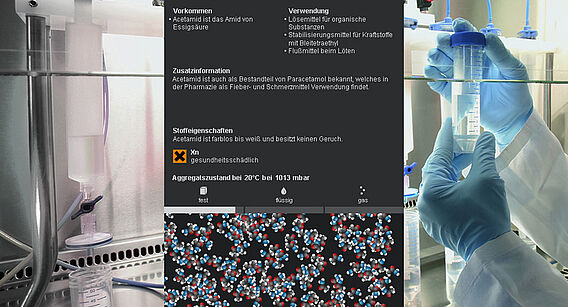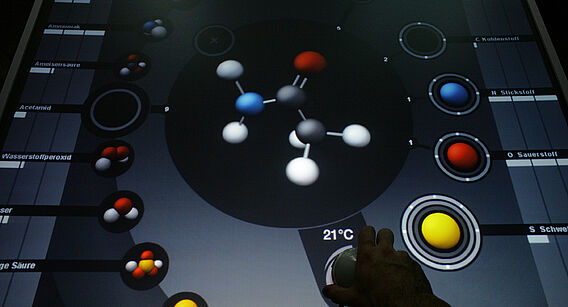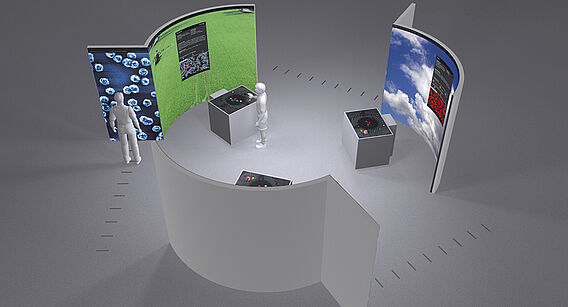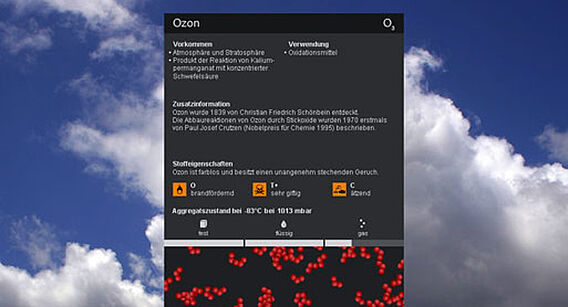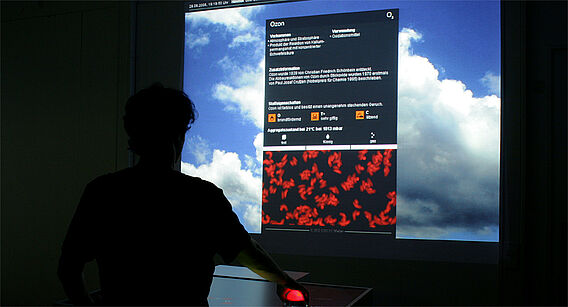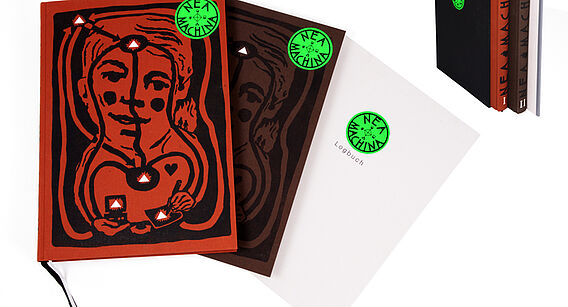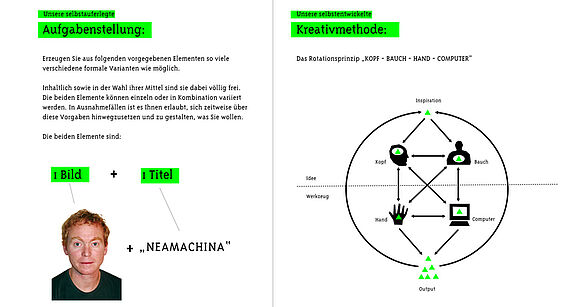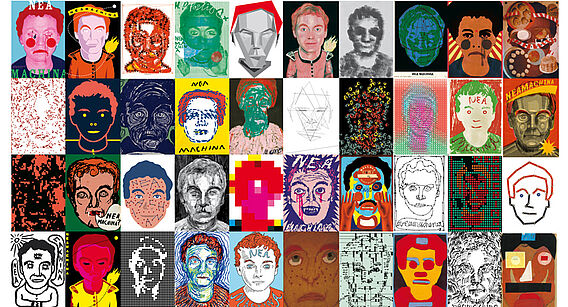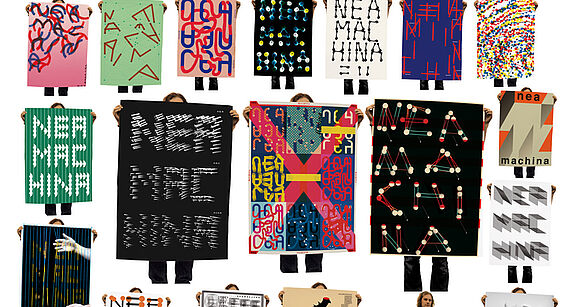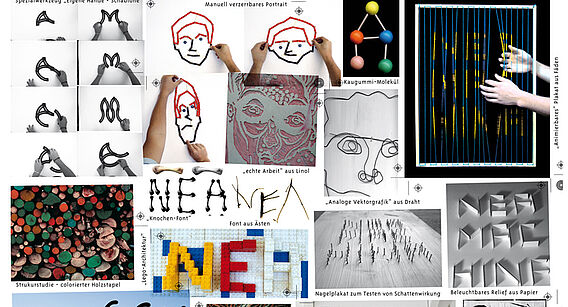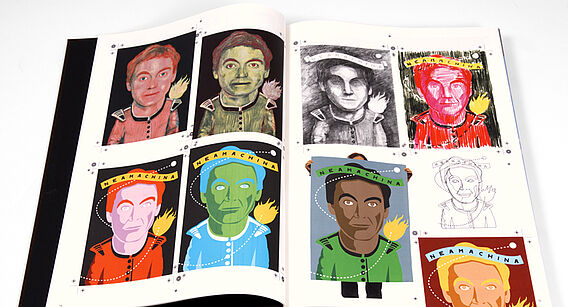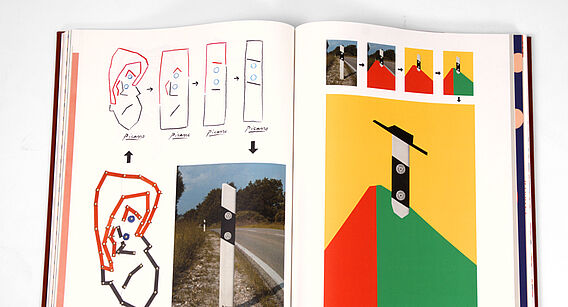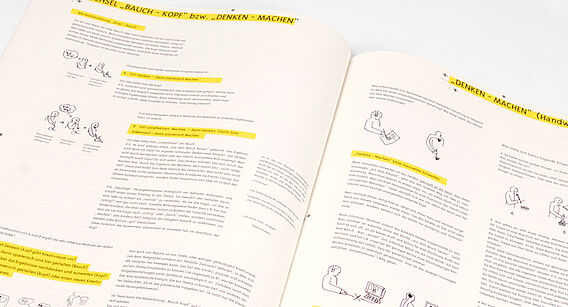Chemieraum – tangible chemistry in an exhibition
Chemieraum (Chemistry Room) was implemented in cooperation with the TUMLab of the Deutsches Museum in Munich with the objective of encouraging young people to explore the world of atoms in a tactile and interactive way. Chemieraum is made up of a media table supported by a projection from a wall. Thanks to its modular layout, the individual segments can be adjusted to the size of the room and the number of visitors. The closer the young viewers come to the structure, the more they zoom themselves in, until they become visible on a molecular level. The process is aimed at taking young people on a journey away from everyday life into the world of molecules. The input device (Puck) on the table can be used to select entire molecules from a library or – from the “Toolbox of Elements” – to create molecules by adding individual atoms.
The projection on the wall has information for visitors about the characteristics of the material they have selected and its connection to everyday life. Using a temperature controller, the aggregate states of the materials projected can be compared to one another. A novel type of input device enhances visual stimuli by means of haptic feedback – when the temperature is increased, the Puck vibrates more strongly and lights up in the colors of the active atom. When visitors creating a molecule feel resistance, it shows that the molecule cannot take up any more elements.
